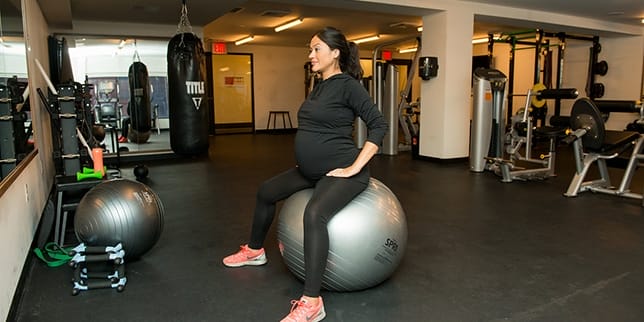This video brilliantly explains contractions with a balloon + a ping-pong ball

If you’re feeling a bit confused by the difference between Braxton Hicks and labor contractions, know that you’re not alone, and check out her video:
Women’s bodies are truly amazing. It can be hard to wrap your mind around all that goes into conceiving, growing and giving birth to a baby—especially when you’re the one who’s doing it.
Enter Liz Chalmers of the
Puget Sound Midwives & Birth Center.
Ms. Chalmers has gained national attention for her awesome demonstration of how the uterus works in birth—using a ballon and a ping-pong ball.
So if you’re feeling a bit confused by the difference between Braxton Hicks and labor contractions, know that you’re not alone, and check out her video:
(credit:
Caters News)
The uterus is a giant (and incredible and powerful) muscle. So in the same way that when you flex your arm your
arm muscle contracts, when you are in labor your uterus contracts.
With the help of oxytocin, also known as the love hormone, these contractions are working to slowly soften, dilate (open) and engage (shorten) your cervix so that your sweet baby can come out into the world.
Contractions usually start as mild and infrequent, and build in intensity, length and frequency as labor progresses.
(Psst: To learn all about the labor process and how to cope, check out Motherly’s birth class!)
Unlike labor contractions,
Braxton Hicks contractions do not open your cervix. They may, however, help to tone your uterus and prepare it for labor and birth—you can consider them to be “practice” contractions. Some women feel Braxton Hicks regularly, and some never do (though they are having them). Either way, your body is doing what it needs to, so try not to stress!
If you are earlier than 37 weeks pregnant and have more than five contractions of any kind, call your
doctor or midwife to make sure it’s not preterm labor.
Why this video matters
We are not very exposed to birth in our day-to-day lives. Sure, we watch
A Baby Story, hear our friends’ birth stories and take childbirth education classes, but compared to a time when birth usually happened at home, and the postpartum time was spent surrounded by female family members, we are relatively removed from birth.
The birth stories we do hear are often the challenging ones that have the potential to instill fear.
It’s no wonder we have so many questions about it.
So how do we as a society make this better?
How do we tell our birth stories in ways that informs women without scaring them?
How do we re-establish a society that empowers women around birth, in all the
beautiful ways that birth happens?
We start with ping-pong balls ?.
Little steps toward educating women about our bodies and birth will go far. Video like Ms. Chalmers’ take fear out of the process and make birth fun and interesting while demonstrating just how awesome we are.
We applaud her effort and can’t wait to see more!


































